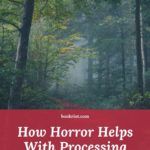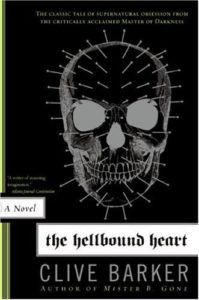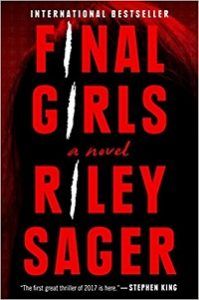Now I know what you’re thinking; horror can’t be good for someone with mental health issues. It’s just page after page of triggers. The knee-jerk reaction for most is to say, “Hey, they’re screaming and there’s blood and fear and all sorts of otherwise no-goodness. You should watch things with flowers, and rainbows.” It’s just going to be page after page of triggers, and sadism, and misery. But go with me. I developed a horror obsession at a very early age. I can remember watching Nightmare on Elm Street sitting transfixed in my older sister’s lap. I watched Freddie torment teenagers in that safest of spaces, sleep, but did not cringe or look away. Alien and Aliens were family viewing movies. I was also exposed to the horror of that which is the original version of The Bad Seed. When I learned to read I gravitated to horror. It quickly went from counting and alphabets to green ribbons tied around necks (poor Jenny) a la The Green Ribbon, dark secrets, and ghosts galore. For reasons beyond explanation for a child’s mind I gravitated to the grotesque and weird. Before I could articulate where it hurt there were books, and movies to serve as a balm. In the progression of my reading I found familiarity. In the works of Clive Barker I learned that the real monsters are people. In The Hellbound Heart someone had to summon the Hell Priest, and it was only when called Pinhead (a name which he despises in the books) came to show the despicable Frank equally horrible wonders. In The Books of Blood we learned to respect the dead. Should you mock them on the highway to the afterlife they will take their pound of flesh, and their stories are sad and wonderful. In the world of Stephen King we learned that even children aren’t safe, be it from business men who can’t process being stuck in yesterday, waiting sharp toothed fur balls in The Langoliers, the poor Brian Rusk committing horrible pranks for a baseball card he just has to have, or the many trials of Jake as he follows Roland Deschain through the Wastelands toward The Dark Tower. I found validation in the written word that not all monsters have fangs. They can absolutely look like the person next door, and harbor dark secrets that can hurt. You don’t have anything to fear from the monster in the closet, but what you’ll see out your apartment window into the living room across the street, well that’s another matter entirely. In some respects, novels are kinder and more upfront with trigger warnings than movies. You can’t exactly say on the movie jacket that someone will get their tongue ripped out, because it is quite literally showing rather than telling. However, the blurb on the back of the book gives you a pretty good idea of exactly what you’re about to experience. Nazi elves created by the SS? You know you’re walking into something that while charged will have some element of heroism for a marginalized group. Rape revenge? By definition the antagonists will get what’s coming to them, and some may take solace in that. I admit due to content and triggers, I still cannot watch, or read Margret Atwood’s The Handmaid’s Tale. I have found in my case it’s about knowing my personal limitations. Recently, I’ve learned that the world of psychology has begun studying the effects of horror on people with emotional and mental issues, and their findings are surprising. As I said, the knee-jerk reaction to horror is that it will make things worse. It’s triggering and by definition hits those discomfort and fear buttons. But is that true for everyone? Studies have shown that horror can help us with grief, anxiety, depression, and a number of other disorders. For someone experiencing a deep loss or processing trauma, it becomes less about the deaths and more about the survivor. Grief studies in particular have found that trying to make someone feel better only makes the situation worse. You’re invalidating their feelings rather than helping. A book can take someone suffering on a journey. You feel the pain with the characters, some surviving while others do not, and there is a resolution of some kind. The final person can become a personal patron saint of healing. You would think rape-revenge or other revenge trope stories would be immensely painful for survivors. The opposite is quite true for some. They will pick up the book knowing full well that the tome in their hands addresses rape, and murder, and harm of a child. Instead of just reliving and rehashing pain, there is a pay off. There is strength in the survivor, and gratification in the villain getting theirs. You triumph with the protagonist, rather than being dragged down by the subject matter. I will admit, as a trauma survivor, I find these journeys to be comforting. I don’t relive events over and over, but instead find triumph right along with the characters in the book. Perhaps before we prejudge a genre, we should look for the hidden value. Instead of trying to fix whatever the looming “it” is for someone, perhaps offer a book that grieves with them rather than attempting to mask or distract. We all have our own patron saint of healing, and sometimes that comes in the form of Pinhead answering a call to dish out exactly what a human monster deserves, or Quincy from Final Girls with her baking blog and kleptomania. In my case, Quincy in particular made it feel like I did not have to have it all together. I can be flawed and that’s okay. There is beauty in the journey, even if it’s blood soaked pages riddled with ghosts, ghoulies, and monsters galore.


